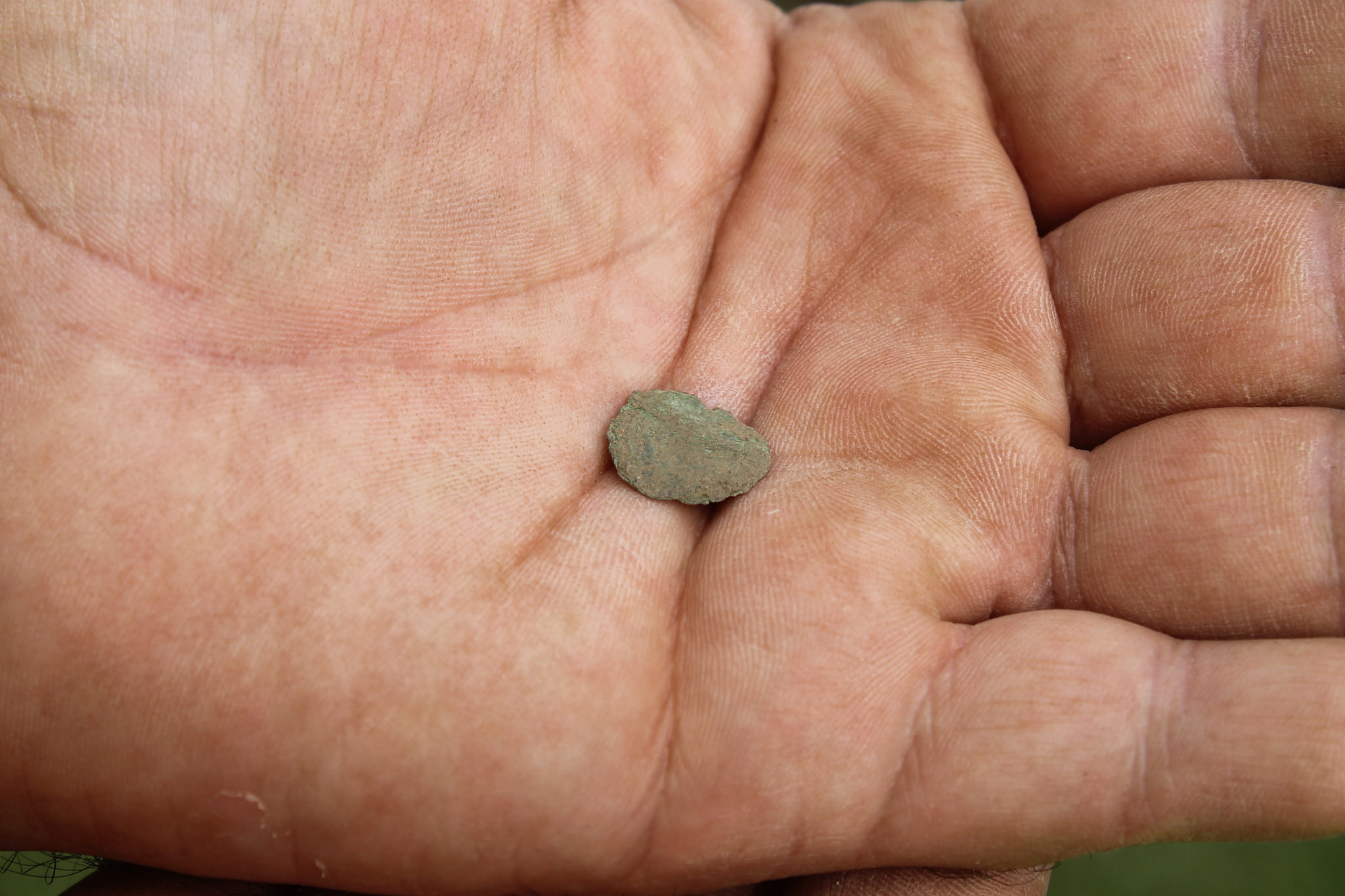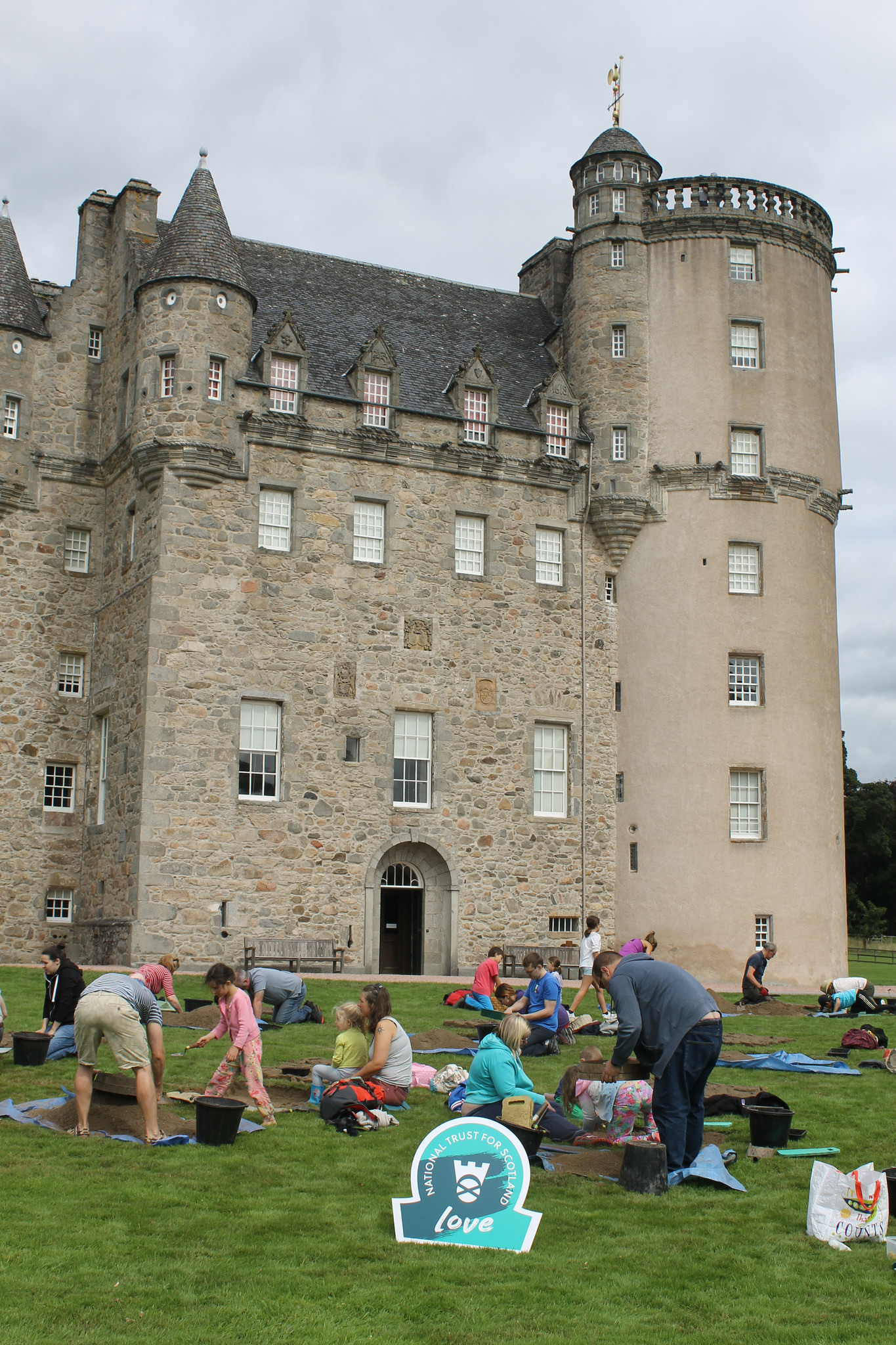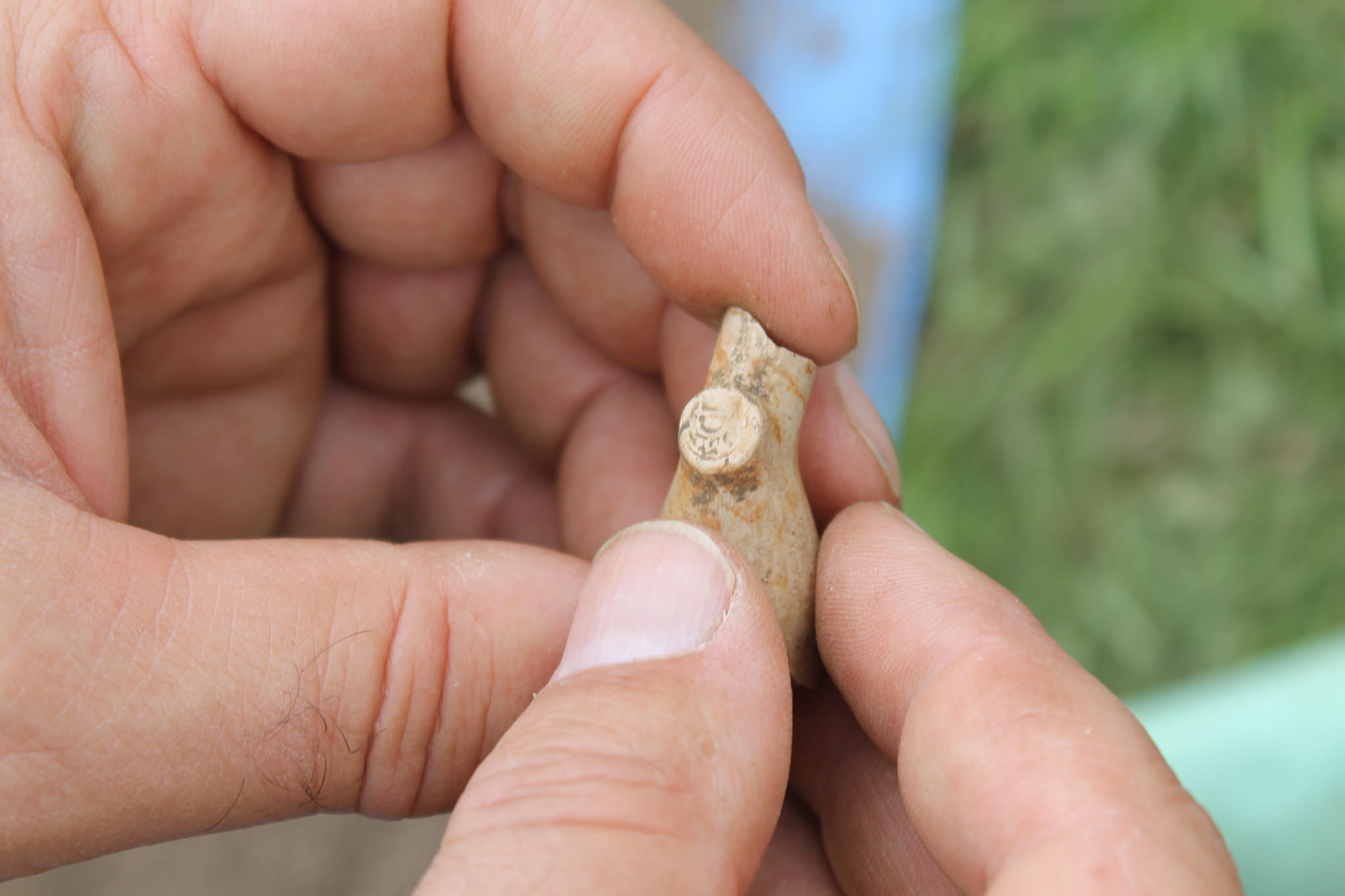
Public digs find evidence of attack at Scots castle
A public dig has uncovered evidence of a 17th century attack at a Scottish castle.
Over 400 members of the public took part in archaeological excavations at the National Trust for Scotland’s Crathes Castle and Castle Fraser, in Aberdeenshire, over the last two weekends.
At both locations the work was supervised by the conservation charity’s archaeologists and a team of dedicated archaeological volunteers. The ‘come and have a go’ approach proved very popular with families and attracted both first timers and seasoned diggers.
Dr Daniel Rhodes, Trust archaeologist said: ‘Last year at Castle Fraser we found a 16th century silver coin but this year the evidence appears to focus more on the 17th century. Two copper alloy coins were found, one each at Crathes and Castle Fraser, and both appear to be coins called Turners (2 pence) of Charles I from 1632-1639.

It might be hard to identify but this small artefact is a coin from the rein of Charles 1st and dates to 1632 – 1639
‘The mid-17th century was a volatile time in the north-east. Following a peaceful surrender, the Marquise of Montrose camped his royalist army at Crathes in 1645.
‘And sometime between 1653 and 1655 Castle Fraser was attacked by Oliver Cromwell’s General Monk as he suppressed royalist supporters. The concentration of broken window glass around Castle Fraser may be a result of this destruction.’

The excavation at Castle Fraser was searching for evidence of the earlier 15th century tower
In addition to the coins and glass, artefacts recovered by the excavation included 19th century pottery, but also quantities of 18th century wine bottles, roof slates and nails.
A number of pieces of chipped flint suggest prehistoric activity in the area although a squared off piece was clearly a gun flint, from a flint lock musket.
Dr Rhodes said: ‘It is great to see so many people come out and take an active part in their heritage.
‘In addition to the protection and promotion of our properties, the Trust is keen to provide engaging experiences and the last two weekends have proved a major success in involving the public in what we do, for the love of Scotland.’

Diggers at Castle Fraser found clay pipes that could be dated to the 16th century by the stamps on their bases
TAGS

